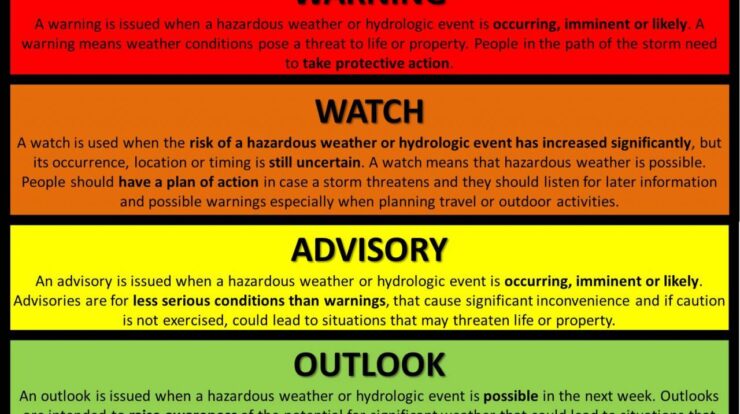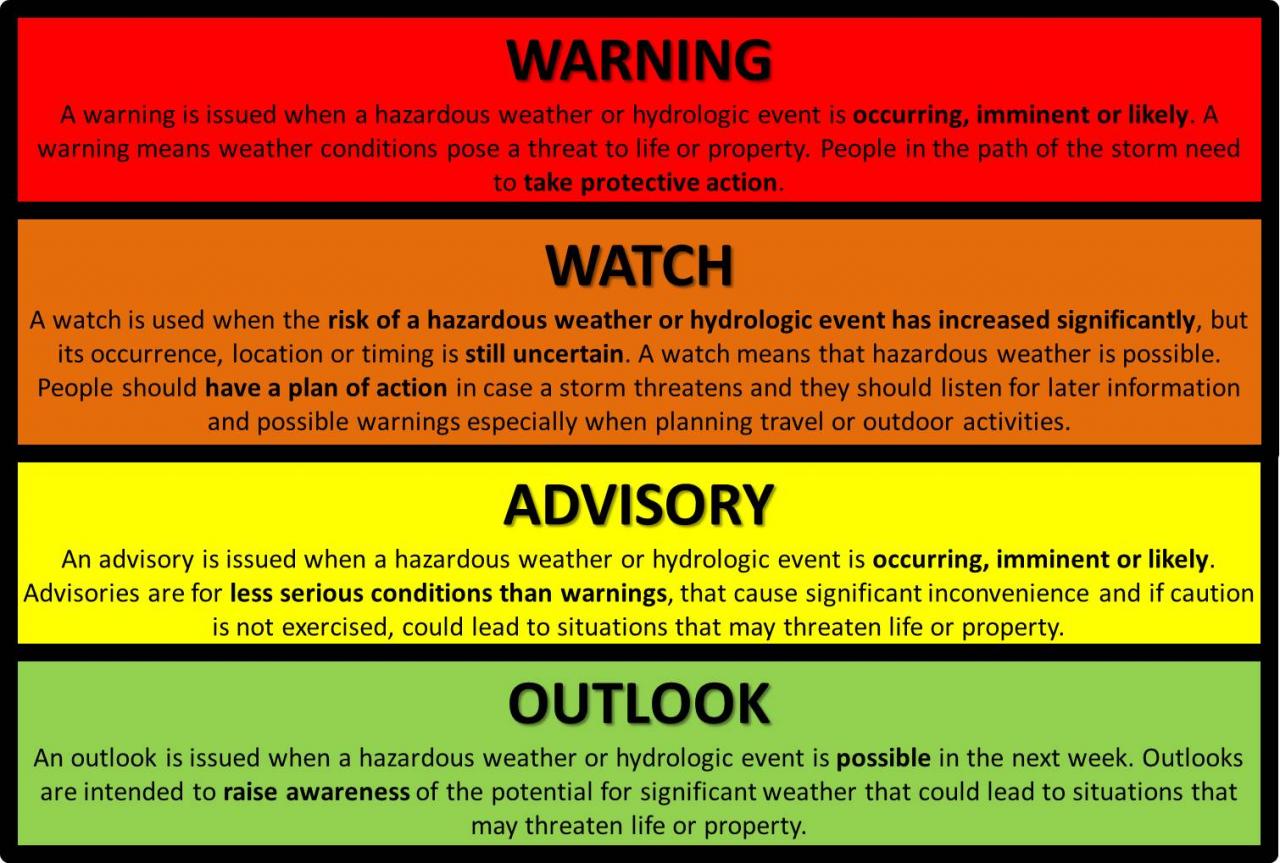
Is a watch or warning worse – In the realm of emergencies, the distinction between a watch and a warning can be crucial. As sirens blare and notifications flash, knowing the difference between these alerts can guide our actions and potentially save lives. This comprehensive guide delves into the complexities of watches and warnings, exploring their severity, immediacy, and the appropriate responses to each.
Watches and warnings serve distinct purposes in the emergency management system. A watch indicates a potential threat, while a warning signals imminent danger. Understanding these differences is paramount for effective preparedness and response.
The vibrant streets of the Netherlands come alive on King’s Day , a vibrant celebration of history, culture, and community. It’s a day where Dutch unity and pride shine through, as people gather to celebrate their beloved monarch and the rich tapestry of their nation.
This year’s festivities promise to be even more special, with the entire country coming together to honor the King and the Netherlands’ unique heritage.
Severity and Immediacy

A watch and a warning are two distinct types of alerts issued by meteorological or emergency management agencies to inform the public about potential or imminent hazardous weather or other emergencies. The severity and immediacy of the actions required for each type of alert vary significantly.
A watch is issued when conditions are favorable for the development of severe weather, such as tornadoes, hurricanes, or floods. It does not mean that the event will definitely occur, but it does indicate that people should be prepared and monitor the situation closely.
A warning, on the other hand, is issued when severe weather is imminent or already occurring. It means that people should take immediate action to protect themselves and their property.
Examples of Situations Where a Watch or Warning Would Be Issued
- A tornado watch may be issued when a line of thunderstorms is moving through an area and conditions are favorable for the development of tornadoes.
- A hurricane watch may be issued when a tropical depression or storm is expected to strengthen into a hurricane and threaten a particular area.
- A flood warning may be issued when heavy rainfall is expected to cause rivers or streams to overflow their banks.
Issuing Authorities and Dissemination

Watches and warnings are typically issued by national meteorological or emergency management agencies, such as the National Weather Service in the United States or the Meteorological Service of Canada. These agencies monitor weather conditions and use computer models to forecast potential hazards.
Once a watch or warning is issued, it is disseminated to the public through a variety of channels, including:
- Television and radio broadcasts
- Newspapers and websites
- Social media
- Mobile phone alerts
The media and technology play a crucial role in the dissemination of watches and warnings. By providing timely and accurate information, they help to ensure that the public is aware of potential hazards and can take appropriate action.
Response and Preparedness
When a watch or warning is issued, it is important to take appropriate action to protect yourself and your property. The specific actions required will vary depending on the type of hazard and the severity of the threat.
The Elkhorn Nebraska Tornado of 2019 remains a vivid reminder of the devastating power of nature. In the years since, the community of Elkhorn has embarked on a remarkable journey of recovery and resilience. Through innovative safety measures and community-led initiatives, they have rebuilt their lives and emerged stronger than ever before.
For example, if a tornado warning is issued, you should immediately seek shelter in a sturdy building or underground. If a flood warning is issued, you should move to higher ground and avoid driving through flooded areas.
It is also important to be prepared for emergencies by having an emergency plan and supplies on hand. An emergency plan should include information on where to go and what to do in the event of a disaster. Emergency supplies should include food, water, first aid kits, and other essential items.
Examples of Effective Response Plans and Community Preparedness Programs, Is a watch or warning worse
- The National Weather Service’s “Ready, Set, Go!” program provides guidance on how to prepare for and respond to severe weather.
- The Federal Emergency Management Agency (FEMA) offers a variety of resources to help communities prepare for and recover from disasters.
- Many local governments and organizations offer community preparedness programs that provide training and resources to help residents prepare for emergencies.
Communication and Public Understanding: Is A Watch Or Warning Worse

Clear and effective communication is essential for ensuring that the public understands watches and warnings and takes appropriate action. This can be a challenge, as people may not always be aware of the different types of alerts or the actions required for each type.
To improve communication, it is important to use clear and concise language and to avoid technical jargon. It is also important to provide timely and accurate information, and to use multiple channels to reach the public.
Public understanding of watches and warnings is also crucial. People need to know what these alerts mean, what actions to take, and where to find more information. Education and outreach programs can help to improve public understanding and trust in the alert system.
In the heartland of Nebraska, the devastating Lincoln Nebraska Tornado left a trail of destruction, leaving communities reeling in its wake. But amidst the devastation, stories of resilience and hope emerge. The people of Nebraska are coming together to rebuild their homes and lives, demonstrating the indomitable spirit that defines this great state.
Strategies to Improve Communication and Reduce Confusion During Emergencies
- Use clear and concise language in watches and warnings.
- Avoid technical jargon and use plain English.
- Provide timely and accurate information.
- Use multiple channels to reach the public, including television, radio, social media, and mobile phone alerts.
- Conduct education and outreach programs to improve public understanding of watches and warnings.
Outcome Summary
Navigating the complexities of watches and warnings requires a balance of vigilance and preparedness. By understanding the severity, immediacy, and appropriate responses to each type of alert, we can mitigate risks and enhance our resilience during emergencies. Effective communication, public understanding, and well-coordinated response plans are essential for ensuring the safety and well-being of our communities.
Expert Answers
What is the key difference between a watch and a warning?
A watch indicates a potential threat, while a warning signals imminent danger.
Who is responsible for issuing watches and warnings?
Typically, meteorological agencies and emergency management organizations are responsible for issuing watches and warnings.
How are watches and warnings disseminated to the public?
Watches and warnings are disseminated through various channels, including media outlets, mobile alerts, and social media.





